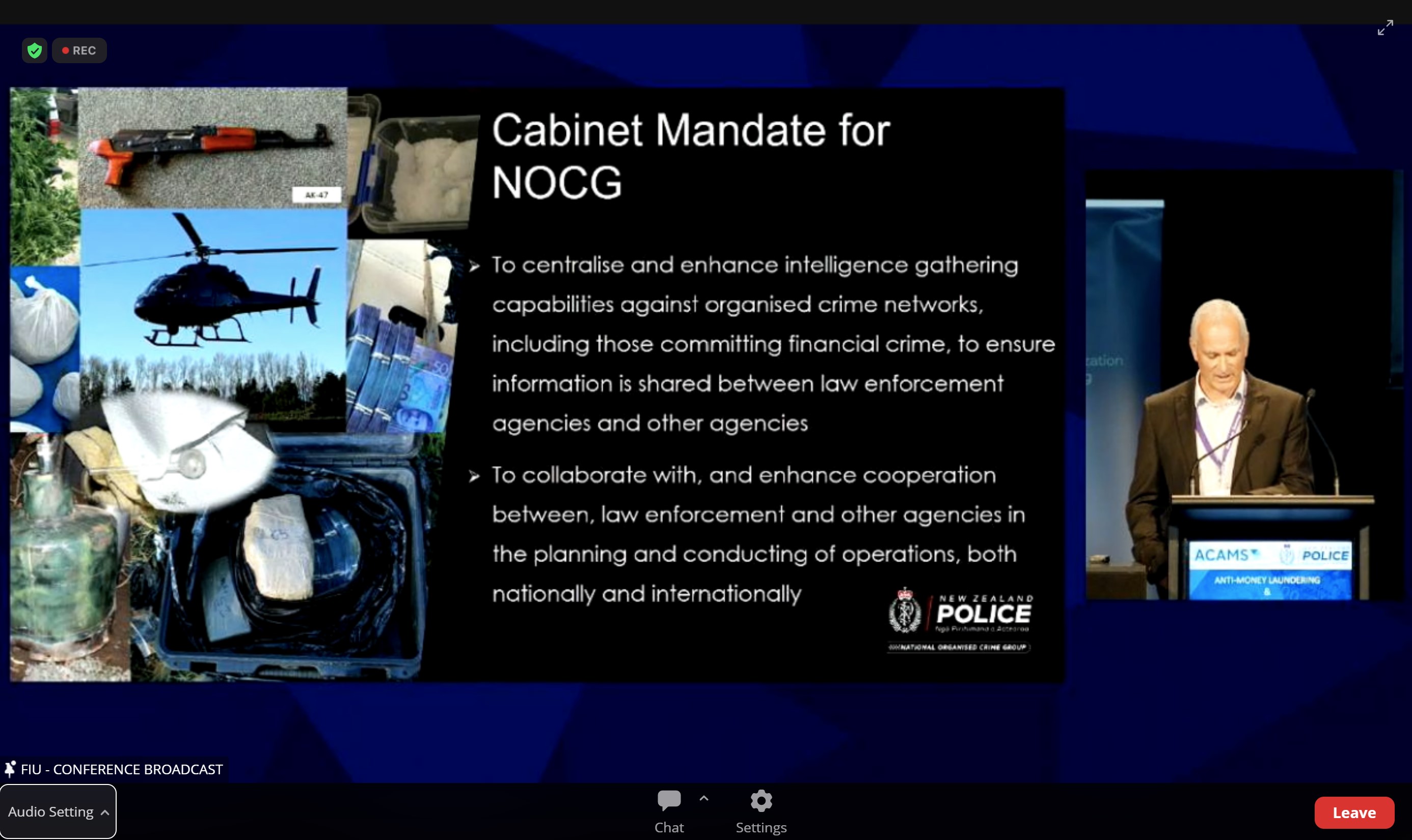The annual FIU/ACAMS AML/CFT Conference was held in Wellington in November.
The theme of the conference was “Money laundering is not a victimless crime” with presentations covering modern slavery, human trafficking, child sexual abuse and environmental crimes with a focus on the fisheries industry. These are all predicate offenses for money laundering because the motivation behind these crimes is financial and the money gained needs to be laundered. Moreover, they are not separate offenses: for example, illegal fishing is damaging the marine environment and often uses slave labour to man the fishing boats.

A screenshot of virtually attending the session by Gary Hughes: Global ripples from the Cullen Commission into ML in British Columbia, Canada.
We tend to think that these offenses are more prevalent overseas than in New Zealand. Whilst this is true, there is still offending in New Zealand which the presenters highlighted with local case studies.
Traditionally, anti-money laundering practices focus on identifying the offender, with the ultimate aim of reducing the level of offending. Transaction monitoring is put in place to detect patterns of financial data that indicate an offender is moving money in the placement, layering and integration phases of money laundering.
But for every offense there is a victim and the effect upon the victim is typically life changing and long lasting. As AML professionals, instead of solely focusing on identifying offenders, we should also be understanding and identifying the financial patterns that indicate that someone is being victimized. Once we understand those patterns, we can put transaction monitoring in place to help protect our customers.

